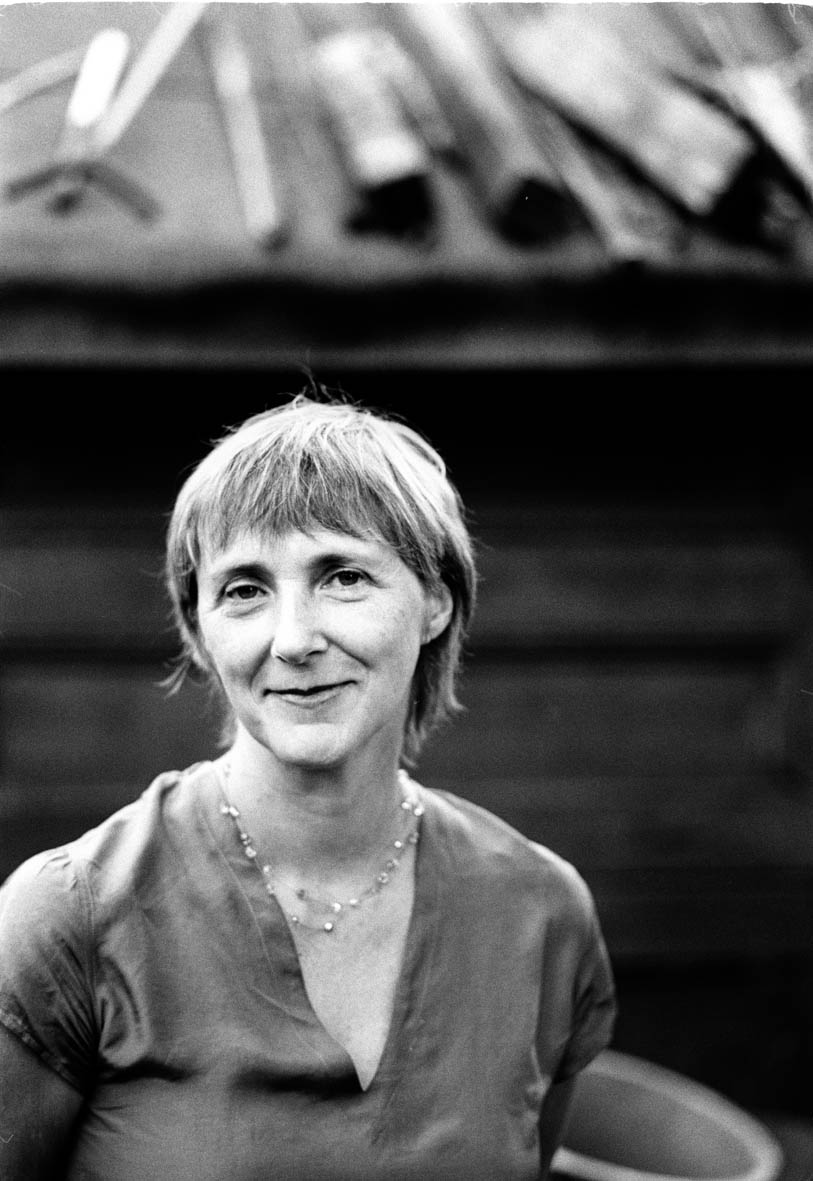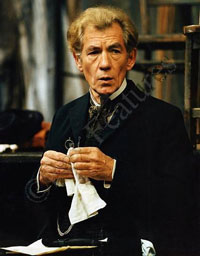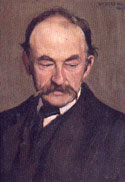'But are you any good?'
Siân Ede, Arts Director of the Gulbenkian Foundation, has pioneered projects bringing artists and scientists together. As a commentator on sci-art projects, she has written Art and Science and edited and contributed to Strange and Charmed on science and contemporary visual arts. Siân Ede tells Wallace Heim about the kind of projects which fire her imagination.
|
|
Wallace |
Why do you think that the ‘science’ in these projects often sidelines the ‘environmental’ sciences, including those that observe the natural world, ecosystems and climate change?
|
|
Siân |
 I think that this is to do with the status of environmental science within the science community - or more explicitly within the politics of science. There are sexy subjects in science like in-vitro fertilisation or cloning or heart surgery or nano-technology but environmental science carries with it a whole burden of responsibilities and guilt which makes it problematic for political investment in it.
I think that this is to do with the status of environmental science within the science community - or more explicitly within the politics of science. There are sexy subjects in science like in-vitro fertilisation or cloning or heart surgery or nano-technology but environmental science carries with it a whole burden of responsibilities and guilt which makes it problematic for political investment in it.
But this is not to say that artists don’t engage with it. Artists have always engaged with Nature particularly since Romanticism. I think we still carry that legacy of Romanticism with us. I was listening to an interview on the radio this morning about the House of Lords opposing wind farming, and thinking "But there is no pristine nature left." It is sentimental to believe that our heaths and mountains are ‘natural’. Actually wind farms are wonderfully aesthetic objects.
Artists turn a lot of ideas on their heads and do not accept an agenda that everything we call ‘nature’ is good. They are very well able to deconstruct what is meant by ‘nature’. Some artists do engage with environmental issues but not necessarily in the usual way. Of course, they are overwhelmed as one often is by the beauty and poignancy and fragility of the natural world precisely because it is in decline. But don’t expect them to be like the House of Lords. They are interested in the science and they are interested in survival, but we have got to look at nature and new technologies in a realistic and energetic way and not in a sentimental way.
|
|
Wallace |
Most science and art projects involve the visual arts. What have you seen that connects performance and the environment?
|
| Siân |
There is quite a history to this, to do with Theatre-in-Education. TIE really burgeoned in the 1960’s and on into the 80’s. Now it’s been replaced by something slightly different. TIE had a Marxist-Socialist agenda, but it did deal with environmental issues and enact them in very startling ways.
The playwright who wrote the classic of that time was David Holman and his play Drink the Mercury in 1972, which was about mercury poisoning around the seas of Japan. It was taken into the classroom and performed amongst the children. Classroom-based small-scale drama is now much rarer because of the economics of arts education. You have to perform to larger numbers or you have to meet curriculum targets. Then, there was a starkness and a boldness about the plays. The style of performance was quasi-naturalistic. It would look at the lives of ordinary people who were suffering from mercury poisoning and look at it with children in a very realistic way. It also used expressionism and very large gestures. Japan and the American multinational were represented by characters in masks. It was a bit crude in its way, but that history was of very bold productions and it had a real agenda to it.
I remember a particularly brilliant piece - I think it was by the Nottingham Playhouse - about finding oil on a Shetland Island. It lasted the whole day. Children were put in a imaginary plane and they were then told that they were the inhabitants of an island. They were made familiar with the old ways of the island and then some people from an oil company came and said "Good news! We’ve found oil on your islands."
They did live debate and interaction with the children about whether this was a good thing or not, and of course made everyone see how complicated it was. It would bring jobs, it would bring new facilities and nicer homes for people and at the same time bring environmental problems. The complications and complexities of that issue were wonderfully wrought so that nobody came home saying, "I definitely think this, I definitely think that." Everyone could see it from both points of view.
I am not in touch with educational theatre, but I am not aware of that kind of bold, stark, "let’s take an issue and really deal with it" way of working. Environmental issues are going to be huge, and I can’t see that people are not going to be dealing with them.
|
|
Wallace |
Many of the companies here on the Directory do work in schools. How do you think the demands of that work have changed?
| |
| Siân |
My sense is that around 1988, which brought in the new National Curriculum, the whole picture changed. Funding was different, and people started talking about curriculum targets. People are still doing those issue-based works, but my impression is that they are much more inclined now to look at the bio-medical issues about cloning and reproduction.
The thing that often gets me is that anything worthy and difficult always seems to be dumped onto education. It’s as though they say: "One of the most important things we must do about renewable energy or whatever is educate children."
Yet, children are the most powerless people in our society. Then they say "We will educate the children and it will be alright and it will all go away." As though schools haven’t got enough to do, without taking on the burden of responsibility and the misery of environmental issues. It seems like a way of hiving things off. You know there are haughty old men who get up and say "We can educate our children to do this or that." No – we must educate you. You are the people with the decision-making powers! You get yourself educated! I feel very strongly about that, dumping on education, asking teachers to take on the problems of the world. It is going to be another twenty, thirty years before those children begin to be decision-makers themselves.

Ian McKellen:
An Enemy of the People |
There is another thing which I feel very strongly about as Arts Director here, is that no art is strictly issue-based. TIE was unashamedly issue-based. That’s what its purpose was. But King Lear isn’t about geriatric medicine. It is about hundreds of different things. I don’t go to the theatre because I think – "Oh here’s a good play which will make me dead miserable about wind farms." I go because I want the richness of human experience. No playwright is going to say "I am writing a play about ... about an issue."
The most interesting play in the field of environmental issues, and it’s one which I draw on all the time, is Ibsen’s An Enemy of the People. It is a brilliant piece of writing that shows the political dilemmas surrounding environmental issues. It is the most fantastic example of somebody standing up for freedom and not looking at the commercial aspects of it. You see how unpopular the hero has to make himself and the effects on his family as a result of that. It ought to be done over and over again. You can hardly better that play.
|
|
Wallace |
This brings up several important aspects of drama and the environment – and its relation with ‘real-life’. ‘The environment’ can come across as just another political issue, and the special significance of it is lost. But then ‘the environment’ can be ‘too real’ for conventional drama. Or an environmental crisis – like nuclear waste or climate change – can simply be too depressing
|
|
Siân |
If you had to make a real decision about genetic engineering what would you do? That real-life situation belongs more to the soaps which can take these things on very well and raise the public debate. Also, the American film, The Day After Tomorrow, about global warming, that’s using drama in an obvious way. The next time people read the papers they may be slightly more aware, which is what you want to happen. You want Americans to think: this is the consequence of not signing up to the Kyoto Agreement.
I think the environment does open itself up very well to live debate – and debates are dramatic. The audience can say things which make it even more complicated, and the whole thing makes for a wonderful, exhilarating experience. Call it drama if you like - it’s real life, it makes you re-think things. I get my dramatic hits out of real debate and discussion. There is a huge interest nowadays in those sparking debates – look at the debates at the Institute for Contemporary Arts and at the Dana Centre at the Science Museum. They are often more effective at dealing with real issues than drama.
There was an interesting debate at the Cheltenham Festival of Science about nuclear power and alternative power. The two speakers were equally good. The audience was asked to vote at the beginning whether they were pro-alternative or pro-nuclear. There were several questions so it wasn’t black and white. More people turned out to be pro-nuclear power at the end than before because they realised, rather like James Lovelock, that that was better than having the effects of continuing to burn fossil fuels.
The most exciting debate that I ever went to was a few years ago at the British Association on BSE, because it included farmers. There was Richard Lacy, the whistle-blower on the link between BSE and nCJD, and the solicitor for the people who have vCJD on one side and on the other side were farmers. Richard Lacy was saying "This is happening and you’re not listening to it," and the farmers were saying "No. You are ruining our livelihoods." It was thrilling and I did feel I was witnessing a piece of drama, really – a piece of live drama. I would rather go to that than go than go and see a piece of made-up drama – apart from Enemy of the People .
|
|
Wallace |
As Director of Arts for the Gulbenkian Foundation, you’re able to observe the directions new works are taking, and also to influence those directions through funding policy and criteria. Where do you see science and art going now?
|
|
Siân |
All our grants are for early research and development activities. I’m now half-wondering whether to do an arts and environment strand. But I think I probably won’t call it that. I’ll probably say we’re continuing to do R&D but this will include environmental issues.

Dolly the sheep |
My fear is that very poor applications will come forward. My joke is always – and this is absolutely true - when I was on the Science on Stage and Screen Committee at the Wellcome Trust and we asked for things addressing science we got I can’t remember how many plays with the title ‘Hello, hello, hello, Dolly, Dolly, Dolly’. They were all really dreadful plays about cloning. Nothing had broken boundaries.
|
|
Wallace |
This brings up the question of quality.
|
Siân |
I think it is the key issue. When people write to me with an application and say "We’re writing a play to change the world and these are the issues," I say "Well, who’s going to disagree with that? But are you any good?"
I’m really only ever interested in funding good art. I’m much more likely to say – “So who’s your playwright? What’s her track record? Is she any good?” Because it’s absolutely hopeless unless you get a good writer. And then of course a good writer will say “I don’t write plays about …a specific issue.”
I invited Peter Nichols in to discuss writing a play about genetics. I didn’t put it so simply, but he did have a grant and he hasn’t yet written this play. Now and again he writes me a guilty letter saying "Honestly I have spent the last week in the Wellcome Library and I don’t understand it!" And I say "Never mind, Peter." Because one day Peter Nichols will write a play about something which won’t necessarily be about genetics but some of that knowledge might find its way through. Similarly, Michael Frayn or Tom Stoppard may write about ‘issues’ – but you won’t get a normal, ‘environmental’ play.
|
|
Wallace |
How do you personally think of the environment?
|
|
Siân |
It’s terribly important to me. Because I was brought up in the countryside, I’ve seen it all change a lot. My favourite programme is Radio 4’s early morning Farming programme.

Thomas Hardy |
But I also am very anti-sentimentalist. The opening of the chapter on art and the environment in my new book begins with that Thomas Hardy poem – ‘In Time of “The Breaking of Nations”’ – and he says ‘only a man harrowing clods’, and so on, ‘will go onward the same’. And I say he was wrong. He was saying our simple agrarian life is going to go on forever. Well, it stopped. All over the world. It stopped. There is no maid and her wight whispering by, and no thin smoke without flame. There are monocultures. There are new slaves working in global industries, the forests are being cleared. But that agrarian idyll is still in our imagination, it still has an effect. It is locked into our culture, into the world’s cultures.
My two daughters were brought up in London and they don’t feel the same way about nature as I do. They are environmental politically – but they don’t have the same sense of its wildness. They haven’t got that memory that I carry with me, from my parents and grandparents. I can name hundreds of wild plants because that’s how I was brought up. You have to re-learn that now. But I also see myself as modern. You have to accommodate tourism and jobs now in a way that doesn’t destroy the environment.
It’s terribly important to me. I think of little else. |
|
Siân Ede’s book Art and Science was published in 2005 by I.B. Tauris.
Siân Ede edited and contributed to Strange and Charmed: Science and the Contemporary Visual Arts published by the Calouste Gulbenkian Foundation in 2000.
Also published by the Calouste Gulbenkian Foundation is wild reckoning an anthology of poems provoked by the publication of Rachel Carson’s Silent Spring in 2004. The collection includes newly commissioned poems, including ones by Simon Armitage, John Burnside, Paul Farley, Allison Funk, Linda Gregerson, Seamus Heaney, Andrew Motion, and Paul Muldoon.
published in 2006
|
"When people say to me, 'We’re writing a play to change the world and these are the issues,' I say, 'Well, who’s going to disagree with that? But are you any good?'"
"TIE was unashamedly issue-based. That's what its purpose was. But King Lear isn't about geriatric medicine. It is about hundreds of different things."
|